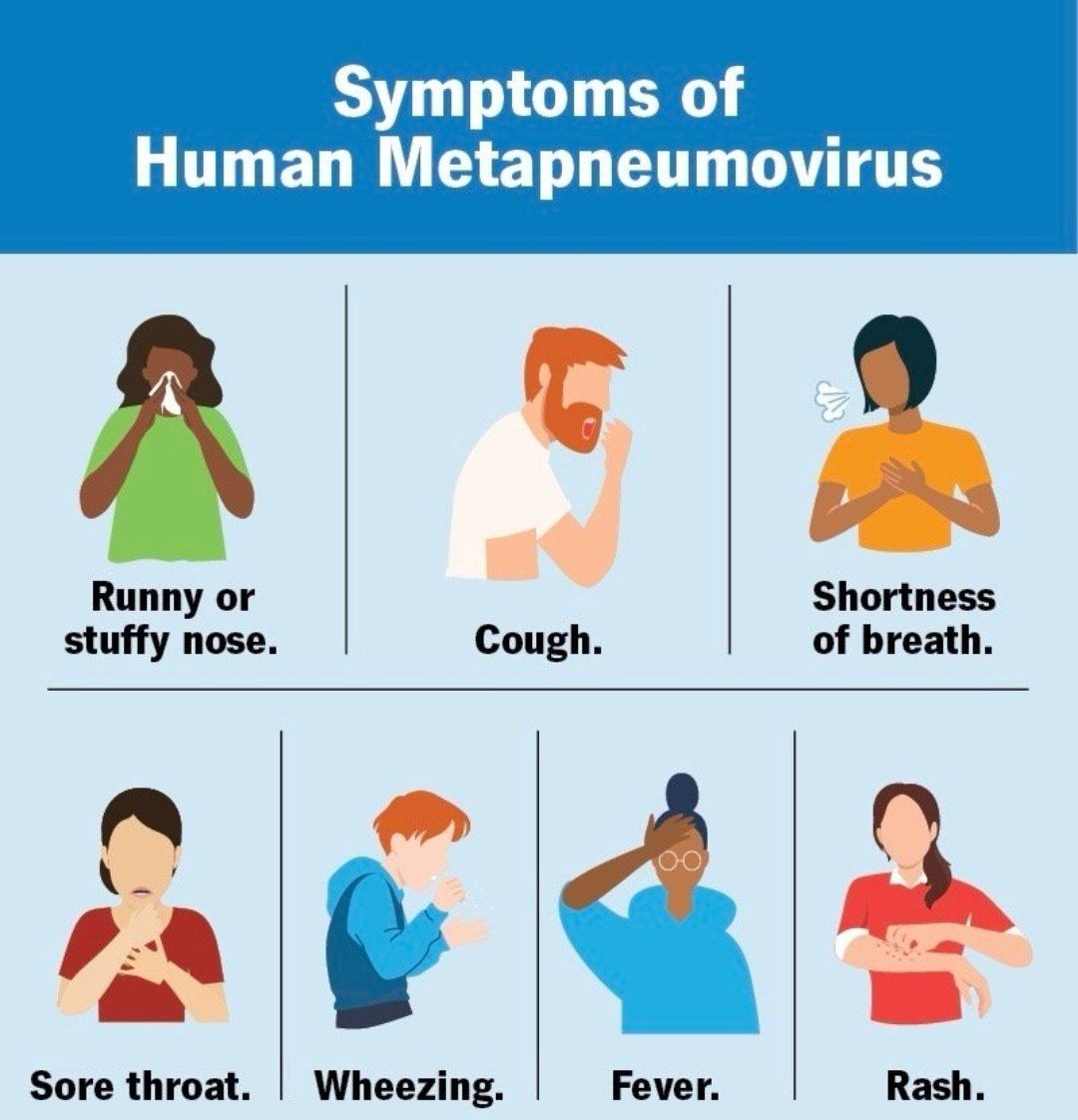Symptoms of HMPV: What You Need to Know
Yathish Acharya
Health
11 months ago

Human Metapneumovirus (HMPV) is a respiratory virus that primarily affects children, the elderly, and individuals with weakened immune systems. While it is most commonly associated with mild cold-like symptoms, it can cause more severe respiratory illness, particularly in high-risk groups. Understanding the symptoms of HMPV is crucial for timely diagnosis and treatment, as well as preventing the spread of the virus.
What is HMPV?
Human Metapneumovirus (HMPV) is part of the Paramyxoviridae family, closely related to the respiratory syncytial virus (RSV). It was first discovered in 2001 and has since been recognized as a significant cause of respiratory illness, particularly in children under five and older adults. HMPV typically circulates in the winter and spring months, causing seasonal outbreaks.
While the majority of people infected with HMPV experience mild symptoms, certain populations are at greater risk for developing more serious complications, including pneumonia, bronchiolitis, and other respiratory conditions.
Common Symptoms of HMPV
The symptoms of HMPV can vary widely depending on the age and health status of the person infected. Generally, symptoms tend to appear within 3 to 5 days of exposure to the virus. Below are some of the most common symptoms:
1. Cough
A persistent cough is one of the hallmark symptoms of HMPV. This dry or productive cough often worsens as the infection progresses and can last for several days to weeks.
2. Fever
Fevers are common with HMPV infections, especially in the early stages. A fever can range from mild to moderate and may be accompanied by chills or sweating.
3. Nasal Congestion
Much like the common cold, HMPV often leads to nasal congestion and a runny nose. This symptom may make it difficult to breathe through the nose, particularly in young children.
4. Shortness of Breath
Individuals with more severe cases of HMPV may experience shortness of breath or wheezing, as the virus can cause inflammation in the airways. This is especially true for infants, the elderly, and those with existing respiratory conditions.
5. Sore Throat
A sore throat is another common symptom, particularly in the initial stages of infection. It may be mild or moderate but can contribute to discomfort when swallowing or talking.
6. Fatigue
Like many viral infections, HMPV can lead to general feelings of fatigue and malaise. This can make individuals feel weak and less able to perform their usual daily activities.
7. Headache
A mild headache is often present in individuals infected with HMPV. This may be due to the fever, congestion, or general discomfort caused by the viral infection.
8. Wheezing and Chest Tightness
In severe cases, particularly among infants or individuals with underlying respiratory conditions, HMPV may cause wheezing, chest tightness, and difficulty breathing. These symptoms indicate a more serious respiratory issue, such as bronchiolitis or pneumonia, and require immediate medical attention.
Symptoms in High-Risk Groups
HMPV infection tends to be more severe in certain groups, including:
- Infants and young children: They are more likely to develop bronchiolitis and pneumonia, which can be life-threatening if not managed promptly.
- Elderly individuals: Older adults, especially those with chronic illnesses such as COPD or heart disease, are at higher risk for developing severe symptoms.
- Immunocompromised individuals: People with weakened immune systems, such as those undergoing chemotherapy or organ transplant patients, may experience prolonged and more severe illness.
When to Seek Medical Attention
While most cases of HMPV resolve on their own with rest and supportive care, it’s important to seek medical attention if you or someone you care for experiences the following:
- Difficulty breathing or shortness of breath
- Persistent high fever that doesn’t improve with over-the-counter medications
- Severe wheezing or chest pain
- Dehydration (due to difficulty eating or drinking)
- Symptoms that worsen or don’t improve after several days
How HMPV is Spread
HMPV is primarily transmitted through respiratory droplets when an infected person coughs, sneezes, or talks. It can also spread by touching surfaces contaminated with the virus and then touching the face, especially the nose or mouth.
Preventing HMPV
There is currently no vaccine for HMPV, so prevention is focused on reducing the spread of the virus:
- Hand hygiene: Regular hand washing with soap and water or using alcohol-based hand sanitizers.
- Covering coughs and sneezes: Using tissues or the inside of the elbow to prevent droplets from spreading.
- Avoiding close contact: Keeping distance from infected individuals, especially during the peak of respiratory illness season.
- Cleaning surfaces: Frequently disinfecting commonly touched surfaces like doorknobs, light switches, and remote controls.
Conclusion
While HMPV infection typically results in mild cold-like symptoms, it can cause more severe respiratory illnesses, especially in vulnerable populations. Early recognition of symptoms, including cough, fever, and nasal congestion, can help in managing the infection. For high-risk individuals, it is critical to monitor for signs of complications like wheezing and shortness of breath, which require immediate medical attention.
By maintaining good hygiene practices and seeking early treatment when necessary, individuals can reduce the spread of HMPV and minimize the risk of severe complications.